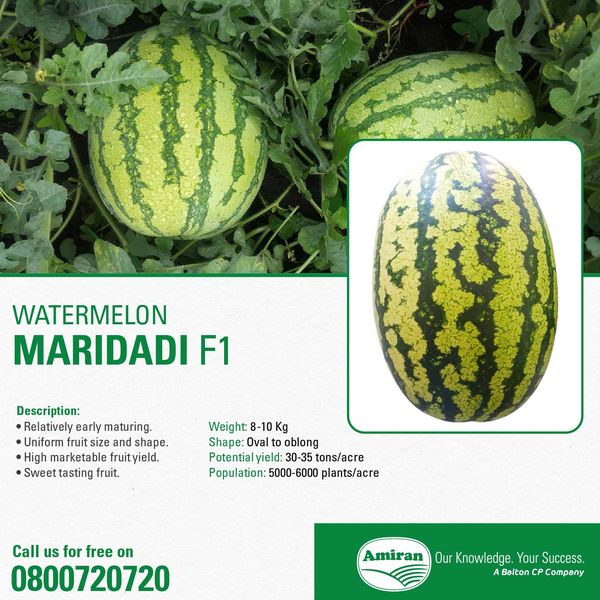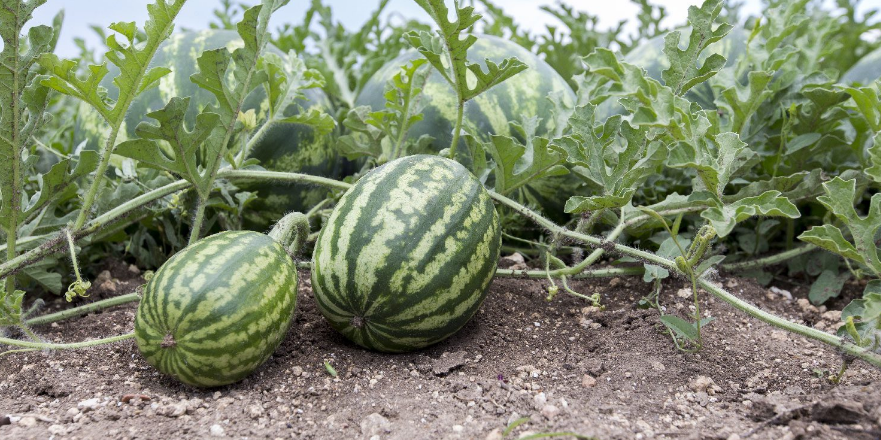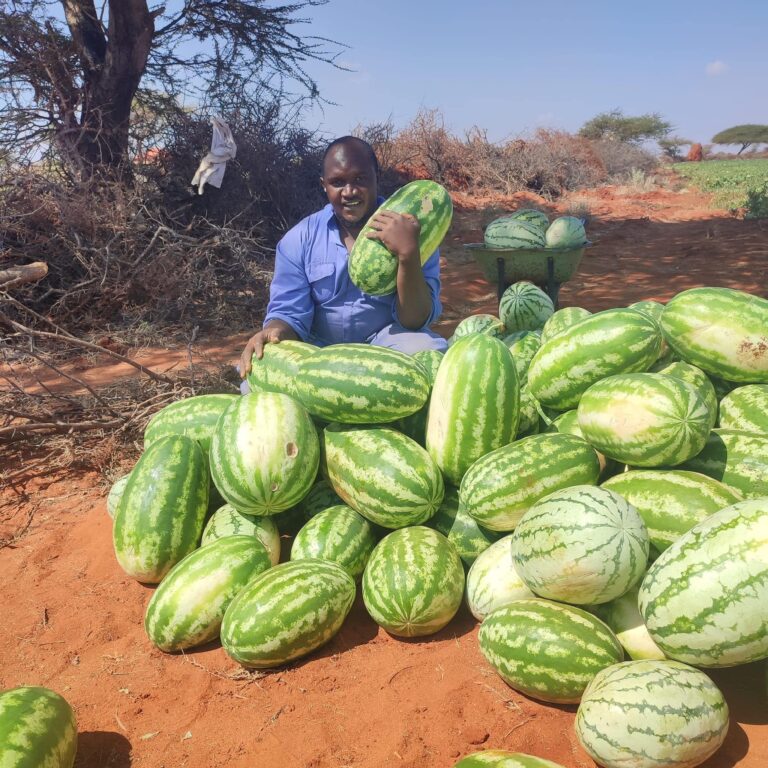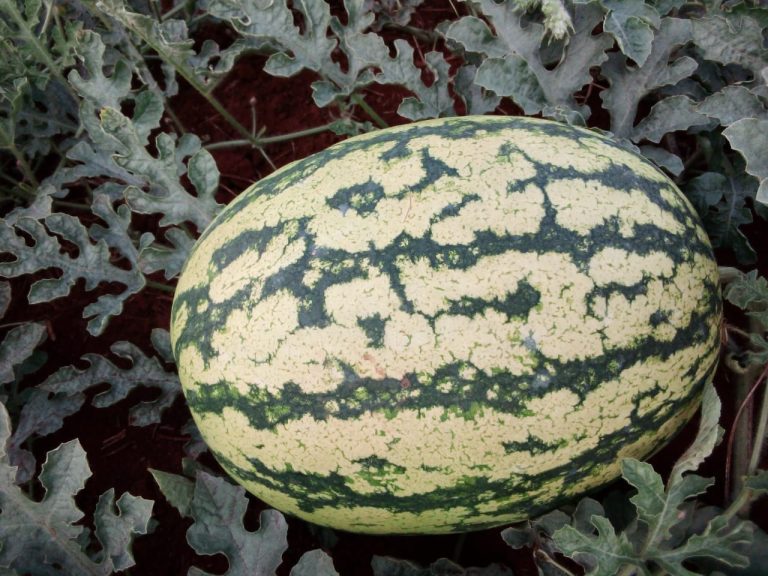Maridadi F1 Watermelon Variety Farming In Kenya
Maridadi F1 watermelon variety farming is gaining popularity in Kenya due to the variety’s impressive yield and resilience. This hybrid variety is well-suited to Kenya’s climatic conditions and is known for its sweetness and large size.
Farmers are increasingly turning to Maridadi F1 for its profitability and adaptability, making it a preferred choice among other watermelon varieties.
Maridadi F1 is a highly marketable and high-yielding watermelon variety. Your choice for a Maridadi harvest.
Key Takeaways:
- Maridadi F1 watermelon is renowned in Kenya for its high yield, sweetness, and marketability.
- It matures relatively early, offers uniform fruit size, and yields 25-35 tons per acre.
- Compared to other varieties like Sukari F1 and Fahari F1, Maridadi F1 excels in yield potential and disease resistance.
Maridadi F1 Watermelon Variety Spacing, Seed Rate/Acre, Seed Cost & Yield
Proper spacing and seed rate are crucial for optimizing the yield of Maridadi F1 watermelon. Generally, a spacing of 1.5 to 2 meters between rows and 0.5 to 1 meter between plants is recommended. This allows sufficient room for growth and minimizes competition for nutrients.
- Seed Rate/Acre: Approximately 500-800 grams of seeds are needed per acre.
- Seed Cost: The cost of Maridadi F1 seeds varies, typically ranging from KSh 8,000 to KSh 10,000 per kilogram.
- Recommended Population: 5000-6000 plants/acre.
- Yield: Farmers can expect an average yield of 25 to 25 tons per acre, depending on soil fertility and crop management practices.

Maridadi F1 Yield Per Acre
The yield per acre for Maridadi F1 watermelon can be highly profitable. With good agricultural practices, farmers can harvest between 25 to 35 tons per acre. This yield is achievable through proper irrigation, pest and disease management, and adherence to recommended planting practices.
Maridadi F1 Vs Sukari F1
Maridadi F1 and Sukari F1 are two popular watermelon varieties in Kenya. While both are high-yielding, there are some differences:
- Yield: Maridadi F1 has a slightly higher yield potential than Sukari F1.
- Fruit Size: Maridadi F1 produces larger fruits, often weighing between 10-12 kg, whereas Sukari F1 averages around 8-10 kg.
- Taste: Both varieties are sweet, but Maridadi F1 is known for its superior sweetness and juicy texture.
Maridadi F1 Vs Fahari F1
When comparing Maridadi F1 with Fahari F1, farmers should consider the following:
- Disease Resistance: Maridadi F1 is more resistant to common watermelon diseases like Fusarium wilt and powdery mildew.
- Maturity Period: Maridadi F1 matures in about 75-85 days, whereas Fahari F1 takes around 80-90 days.
- Yield: Both varieties have similar yield potentials, but Maridadi F1’s shorter maturity period often results in quicker returns.
Maridadi F1 Vs Julie F1 Watermelon
Julie F1 is another competitive variety in the Kenyan market. Key differences include:
- Fruit Shape and Size: Maridadi F1 fruits are round to oval, while Julie F1 fruits are more elongated.
- Sugar Content: Maridadi F1 generally has a higher sugar content, making it sweeter than Julie F1.
- Market Preference: Maridadi F1’s size and sweetness give it a slight edge in market preference.
Maridadi F1 Vs Tunda F1 Watermelon
Comparing Maridadi F1 and Tunda F1:
- Yield: Maridadi F1 often yields more per acre than Tunda F1.
- Disease Resistance: Both varieties are resistant to common diseases, but Maridadi F1 has a slight advantage.
- Maturity Period: Maridadi F1 matures slightly faster, making it suitable for multiple cropping cycles within a year.
Maridadi F1 Vs Fahari F1 Watermelon
The differences between Maridadi F1 and Fahari F1 in terms of watermelon farming are crucial for farmers making a choice:
- Climate Adaptability: Maridadi F1 is more adaptable to varying climatic conditions, ensuring stable yields across different regions.
- Fruit Quality: Both varieties offer high-quality fruits, but Maridadi F1’s larger size and superior taste often make it more marketable.
Maridadi F1 Watermelon Price/kg
The market price for Maridadi F1 watermelon varies based on factors like season, demand, and location. Typically, Maridadi F1 watermelons sell for KSh 20 to KSh 40 per kilogram. The premium quality and larger size often fetch higher prices, especially in urban markets.
FAQ
How much does a Maridadi F1 watermelon yield per acre?
Maridadi F1 watermelon can yield between 25 to 35 tons per acre, depending on the cultivation practices and environmental conditions.
How many grams of seeds are needed for Maridadi F1 watermelon per acre in Kenya?
Approximately 500-800 grams of Maridadi F1 seeds are required per acre.
How much is 1 kg of Maridadi F1 seeds in Kenya?
The cost of 1 kg of Maridadi F1 seeds ranges from KSh 8,000 to KSh 10,000.
How to plant Maridadi F1 watermelon? To plant Maridadi F1 watermelon, prepare the land with well-drained soil, ensure proper spacing (1.5-2 meters between rows and 0.5-1 meter between plants), and plant seeds at a depth of about 1-2 cm. Adequate watering and pest management are essential for optimal growth.
What are the key differences between Maridadi F1 and Sukari F1 watermelons?
Maridadi F1 generally has a higher yield and larger fruit size compared to Sukari F1, with superior sweetness and juiciness.
How does Maridadi F1 compare to Fahari F1 in terms of disease resistance?
Maridadi F1 is more resistant to common diseases like Fusarium wilt and powdery mildew compared to Fahari F1, making it a more resilient choice for farmers.
Conclusion
Maridadi F1 watermelon farming in Kenya presents a lucrative opportunity for farmers due to the variety’s high yield, disease resistance, and market preference.
By understanding the optimal planting practices and differences between Maridadi F1 and other varieties, farmers can make informed decisions to maximize their profits and contribute to the growing watermelon market in Kenya.


